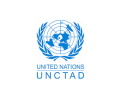
The 2025 World Economic Situation and Prospects (WESP) report shows that despite experiencing a series of mutually reinforcing shocks, global economic growth has stagnated and is still below the pre-pandemic annual average of 3.2 percent.
The report, produced by the UN Department of Economic and Social Affairs (DESA), highlights the long-term impact of weak investment, sluggish productivity and high levels of debt on global economic performance.
Tweet URL
UN Secretary General António Guterres in his foreword called for decisive action to address this challenge.
“Countries cannot afford to ignore this danger. In our interconnected economy, shocks on one side of the world will drive up prices on the other. “Every country is affected and must be part of the solution,” he said.
The road ahead is uneven
The United States is expected to experience a slowdown in 2025 as the labor market weakens and consumer spending declines, the report projects.
Meanwhile, despite falling inflation and labor market resilience, Europe’s economic recovery remains hampered by recurring challenges such as weak productivity growth and an aging population.
In East Asia, economies are expected to maintain relatively strong growth, supported by strong private consumption and stable performance in China.
On the other hand, South Asia is expected to remain the fastest growing region, driven by India’s continued economic expansion.
In Africa, a slight improvement in growth is expected, thanks to recoveries in major economies including Egypt, Nigeria and South Africa. Although conflict, rising debt servicing costs and challenges related to climate change weigh heavily on the region’s prospects.
Overall, global trade is expected to increase by 3.2 percent in 2025, driven by strong exports from Asia and a recovery in services trade.
Additionally, inflation is expected to ease globally, falling to 3.4 percent, providing some relief for businesses and households.
Challenges facing developing countries
However, many developing countries are expected to continue to face inflationary pressures, and one in five countries are experiencing double-digit inflation rates. High debt burdens and limited access to international financing will continue to hamper recovery.
Food inflation remains a pressing problem, and almost half of developing countries experience inflation above five percent.
This has exacerbated food insecurity, especially in low-income countries already grappling with extreme weather events, conflict and economic instability.
The report warns that persistent food inflation, coupled with slow economic growth, could push millions of people into poverty.
Essential minerals: opportunities and risks
Growing industrial demand for critical minerals, such as lithium and cobalt, presents both opportunities and risks.
For resource-rich developing countries, these minerals offer the potential for growth, job creation and increased incomes to accelerate progress towards the 17 Sustainable Development Goals (SDGs).
However, the report warns that poor governance, unsafe labor practices and environmental degradation can undermine long-term benefits and exacerbate inequalities.
Calling for comprehensive policies to ensure sustainable extraction and fair sharing of benefits, DESA chief Li Junhua stressed: “Essential minerals have great potential to accelerate sustainable development, but only if managed responsibly.”
Calling for bold multilateral action
The report concludes with a call for bold multilateral action to address interrelated global crises, including debt, inequality and climate change.
The government is urged to focus on investment in environmentally friendly energy, infrastructure and important social sectors such as health and education.
Stronger international cooperation is considered essential to manage the risks and opportunities associated with critical minerals, ensuring that developing countries can benefit equitably and sustainably.
Source: UN




